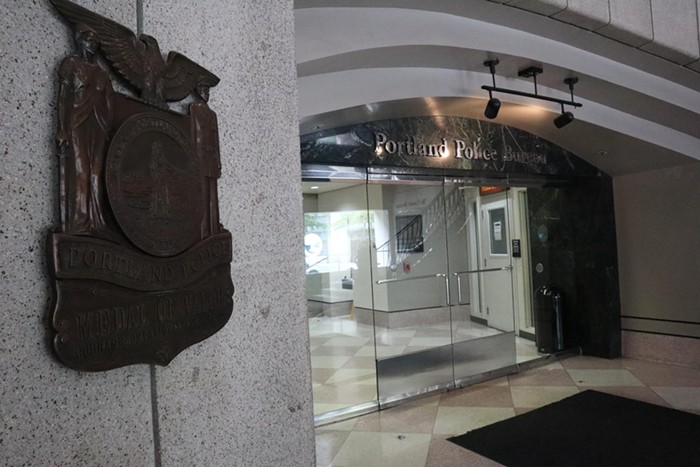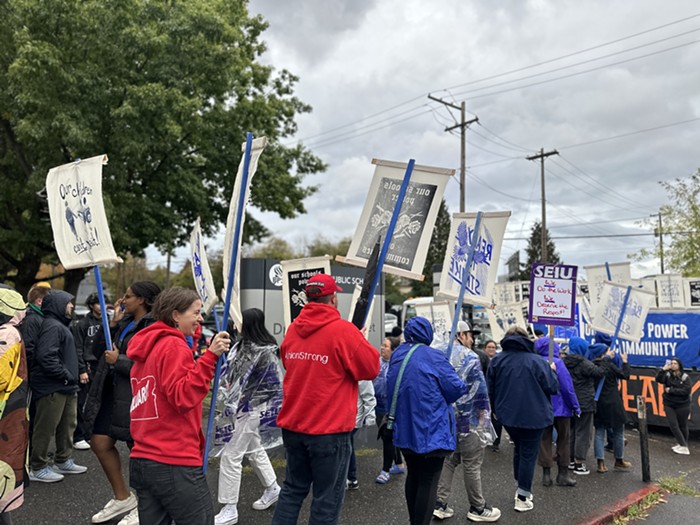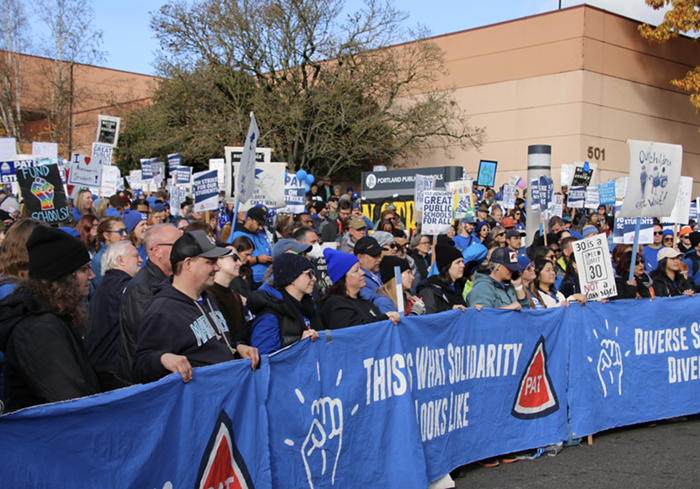Many of the newest apartment buildings in Portland represent the height of luxury, with workout rooms, Amazon Echos, and other upscale delights. But their developers are worried: Thanks to a relatively new city program, they’re being forced to rent some of those pricey units to the less-privileged in Portland. As a result, some say they won’t build as much housing in the city—and they place the blame on inclusionary housing (IH), a policy intended to help with the city’s affordable housing crisis.
IH—a program that requires developers to include affordable units in new residential buildings with more than 20 apartments—has been city policy since February 2017. While developers claim IH is cooling the market and driving development to other cities, the program’s advocates say it’s already helping to solve Portland’s housing shortage.
IH mandates that developers either make 15 percent of the units in large-scale apartment complexes financially accessible to those who make 80 percent or less of Portland’s median family income (MFI), or make 8 percent of the units accessible for those who make 60 percent or less of Portland’s MFI, which is currently $34,200 for an individual. The rental rate for IH units is set at 30 percent of a household’s income, just under the level at which the household becomes “housing burdened.” At that level, an IH studio apartment rents for $855 per month, while an IH two-bedroom apartment goes for $1,099.
According to RENTCafé, the average studio apartment in Portland currently rents for $1,172 per month, and the average monthly rent for a two-bedroom apartment is $1,530. A person working 40 hours a week at Portland’s $12 minimum wage makes an estimated $24,960 per year—less than 45 percent of the city’s MFI.
By the end of 2018, city ordinance dictates that developers across Portland will have to include even more inclusionary housing—falling in line with policies already in place in downtown Portland and the Central Eastside, where developers already have to include 10 percent of a building’s apartments to those making 60 percent of the MFI or 20 percent to those making 80 percent of the MFI.
The IH policy comes with perks for developers, such as not having to pay city property taxes for 10 years, waived fees on some city development charges, and the ability to build larger buildings than zoning would normally allow. There are also options for developers who don’t want to include affordable housing in new complexes: Portland’s IH requirement can be voided if a developer either pays a fee of $20 to $30 per square foot of the building or if they build or purchase affordable apartments in a separate building nearby.
PHB Interim Director Shannon Callahan says that since Portland’s IH program came online in 2017, 35 development projects have participated. Seventeen months into the program, a total of 280 affordable rental units have either been built or are in development.
Callahan says that’s a success, but developers aren’t so pleased.
Tom Brenneke, the president of development firm Guardian Management, says the IH program is a “deterrent” to developers. He believes adding affordable units cuts into the profit margins for big projects, making it nearly impossible for those projects to secure funding.
“If you’re going to tell me to price my units at a certain level,” says Brenneke, “I don’t know if I’ll build it.”
Brenneke adds that IH isn’t the only problem currently hobbling Portland’s developers, citing the city’s slow permitting process, stubborn neighborhood associations, and increasing construction costs. When combined with a recent plateau in local rents, Brenneke says, “You have a policy that’s out of balance.” Brenneke says developers haven’t been applying for very many permits since IH came into effect, but the city does not have data available to corroborate that claim.
Dan Drinkward, the vice president of Hoffman Construction, says IH could have a cooling effect on the Portland development market.
“When you change the economics of [development] pretty drastically, which inclusionary zoning does, then you have to change the deal with all those partners, and most of them will probably walk away,” he says, noting that out-of-town investors “don’t care about housing in Portland.” Drinkward believes national investors are instead focusing on San Francisco and Seattle, and that local developers are moving their projects to Portland’s less-regulated suburbs.
Determining whether IH is effective depends on your perspective, says Marisa Zapata, a land use and urban planning professor at Portland State University.
“When you hear developers say, ‘It depends how you implement [IH],’ they’re talking about how you make developers happiest,” Zapata says. “When I say it depends on how it’s implemented, I’m asking how many inclusionary units we’re getting that actually serve the interests of people from low-income backgrounds.”
Zapata agrees that the development market is slowing down, but she says it’s not as a result of IH.
“Developers hurt themselves by overbuilding luxury housing,” she says.
The numbers back her up. Portland’s vacancy rate for apartments built in 2017 is 12 percent, compared to an overall vacancy rate of 5.7 percent. While the housing market remains tight for lower-income renters, there isn’t nearly as much demand for the more expensive housing that developers have been building.
But Brenneke says Portland needs more housing in general, not just affordable housing.
“We’ve got to build 4,000 or 5,000 units per year to keep up with demand,” Brenneke says, adding that IH could deter developers from meeting that demand.
Even if IH has prevented some new projects from being built, Zapata doesn’t believe their loss will impact the Portlanders who most need affordable housing.
“Building a luxury unit today is not going to become low-income housing tomorrow,” she says. “Unless you’re building units that are designated and designed for people with low-income backgrounds right now, they’re not going to have access to that housing.”


















